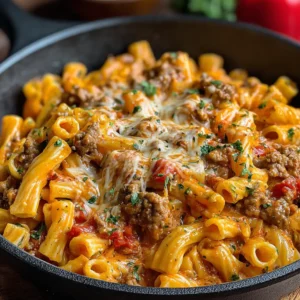Prep Time: 20 minutes Cook Time: 3 hours Total Time: 3 hours 20 minutes Serves: 6
Introduction
When it comes to classic deli favorites, the debate between corned beef or pastrami has been ongoing for decades. Both meats share a savory, brined heritage, yet they stand apart in flavor, texture, and preparation. Whether you prefer the peppery crust of pastrami or the tender, briny warmth of corned beef, understanding their differences helps elevate your culinary appreciation. This guide takes you through everything from the ingredients to the art of preparing both — including pro tips, creative pairings, and storage tricks for making the most out of these beloved meats.
Why Corned Beef or Pastrami Is Worth Celebrating
Corned beef and pastrami are more than just sandwich fillers; they’re traditions passed down through generations. Corned beef, known for its salt-cured tenderness, has Irish-American roots and is often associated with hearty comfort meals. Pastrami, on the other hand, brings in a smoky, spiced richness, derived from Eastern European influences. The two are similar yet distinctive — corned beef is simmered slowly while pastrami is smoked and seasoned with a bold mix of spices. Both offer a depth of flavor that transforms an ordinary meal into something memorable, especially when served with homemade sauces or pickles.
Ingredients
To prepare both corned beef and pastrami at home, gather these essentials:
- 4 pounds brisket (flat cut, trimmed of excess fat)
- 1 gallon water
- 1 cup kosher salt
- ½ cup brown sugar
- 2 tablespoons pink curing salt (Prague powder #1)
- 2 tablespoons black peppercorns
- 1 tablespoon mustard seeds
- 1 tablespoon coriander seeds
- 1 teaspoon allspice berries
- 4 cloves garlic, smashed
- 3 bay leaves
- 1 tablespoon smoked paprika (for pastrami rub)
- 2 tablespoons cracked black pepper (for pastrami rub)
- 1 tablespoon coriander (for pastrami rub)
The Art of Creating Corned Beef or Pastrami
What makes corned beef or pastrami extraordinary lies in the balance between brining and cooking. Corned beef is gently simmered to tender perfection, absorbing the brine’s salty-spicy notes. Pastrami begins as corned beef but takes on an additional smoky journey, coated in a peppery crust and smoked until it develops its signature aroma. The slow process transforms the brisket into something rich, complex, and deeply flavorful — the kind of dish that tastes like it took days to perfect, because it usually does.
Step-by-Step Instructions
Step 1: Prepare the Brine
In a large pot, bring the water, kosher salt, brown sugar, pink curing salt, peppercorns, mustard seeds, coriander, allspice, garlic, and bay leaves to a boil. Once the salt dissolves, remove it from heat and let it cool completely.
Professional Tip: Always let the brine cool before submerging the meat to prevent premature cooking.
Key Points: The brine is the foundation; cool it fully to ensure even curing and consistent flavor absorption.
Step 2: Cure the Meat
Place the brisket in a large container and pour the cooled brine over it. Ensure the meat is fully submerged and refrigerate for 5 to 7 days, flipping it daily for even curing.
Professional Tip: Using a zip-seal brining bag helps the flavor penetrate evenly because it maintains close contact with the liquid.
Key Points: A full week allows the salt and spices to permeate the brisket, resulting in that classic deli-style taste.
Step 3: Rinse and Cook
After curing, rinse the meat thoroughly to remove excess brine. For corned beef, place it in a pot with fresh water and simmer gently for about 3 hours, until tender.
Professional Tip: Add carrots, potatoes, and cabbage in the final 30 minutes for a traditional Irish-style meal.
Key Points: Slow simmering keeps the meat moist while tenderizing the fibers perfectly.
Step 4: Transform into Pastrami (Optional)
If you prefer pastrami, coat the cured brisket with a mix of black pepper, coriander, and smoked paprika. Then smoke it at 225°F for 4 to 6 hours until the crust forms beautifully.
Professional Tip: Wrap the meat in foil halfway through smoking to lock in moisture while keeping the bark intact.
Key Points: The smoking process deepens flavor, making pastrami irresistibly rich and aromatic.
Step 5: Slice and Serve
Let the meat rest for 15 minutes, then slice against the grain into thin pieces. Serve it warm on rye bread with mustard or stack it high on a platter for family sharing.
Professional Tip: Always slice against the grain to ensure tenderness.
Key Points: Resting allows juices to redistribute, ensuring every bite stays moist.
Professional Tips for Mastery
- Use a meat thermometer — corned beef is perfect around 200°F internal temperature.
- Add a splash of beer or broth to the simmering pot for depth.
- For pastrami, finish steaming for 30 minutes before slicing to rehydrate the crust.
Creative Variations
- Make Corned Beef Hash with diced potatoes and onions for a hearty breakfast.
- Try Pastrami Tacos with pickled slaw and spicy mustard.
- Use leftovers in snacks and appetizers to create deli sliders.
Perfect Pairing Ideas
Pair your corned beef or pastrami with savory sides or complement it with flavored dips and marinades. For balance, serve with a crisp salad or enjoy a refreshing drink from the refreshing beverages collection.
Discover More
If you love morning comfort, explore breakfast favorites for inspiring ideas. For sweet endings, visit the dessert recipes section or explore delightful perfect sides that pair beautifully with your meal.
Storage Guidelines
Store cooked corned beef or pastrami in airtight containers in the refrigerator for up to 5 days. For longer storage, freeze portions for up to 3 months. Reheat slowly with a splash of broth to preserve juiciness. Avoid microwaving directly, as it can toughen the meat.
The Science Behind the Flavor
Both meats owe their magic to curing chemistry. The pink curing salt not only preserves the vibrant color but also prevents bacterial growth. During brining, salt and nitrites penetrate the muscle fibers, binding water and protein to create that juicy, tender texture. Smoking pastrami adds a layer of Maillard reaction complexity — the crust caramelizes under low heat, enhancing the peppery aroma and umami depth that makes each slice irresistible.
Troubleshooting Common Issues
If your meat turns too salty, soak it in cold water for 30 minutes before cooking. If it’s dry, reduce cooking time slightly next round. And if the flavor seems flat, increase curing days or refresh your spice mix. Patience and balance are the keys to getting it right every time.
Additional Inspirations
Explore flavorful sides and new recipes to serve alongside your corned beef or pastrami:
Conclusion
Whether you lean toward the brined comfort of corned beef or the smoky spice of pastrami, both stand as proud pillars of traditional cooking. Their preparation teaches patience and respect for flavor development, because good things take time. The next time you find yourself at a deli counter or in your kitchen, remember — the real beauty lies not in choosing corned beef or pastrami, but in savoring the story and craft behind each delicious bite.









